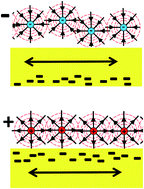Tribological properties of nanodiamonds in aqueous suspensions: effect of the surface charge
Abstract
Surface uptake and nanotribological properties of positively and negatively charged 5–15 nm diameter nanodiamonds dispersed in water have been studied in real time by means of an in situ Quartz Crystal Microbalance (QCM) technique. The frequency and dissipative properties (mechanical resistance) of a QCM with gold surface electrodes immersed in water were monitored upon addition of the nanodiamonds. Measurements were also performed with the QCM electrode in macroscopic contact with stainless steel ball bearings in the presence or absence of the positively or negatively charged nanodiamonds dispersed in water surrounding the contact. The nanodiamonds were found to have a profound effect on the tribological performance at both nanometer and macroscopic scales. The tribological effects were highly sensitive to the sign of the nanodiamond electrical charge: negatively (positively) charged particles exhibited weaker (stronger) adhesion. Positively charged particles consistently increased friction at the solid–liquid interface, while negatively charged particles of comparable size were observed to decrease interfacial friction. For the macroscopic contacts with the gold electrodes, negatively charged nanodiamonds appeared to be displaced from the contact, while the positively charged ones were not. Overall, the negatively charged nanodiamonds were more stable in an aqueous dispersion over extended time periods while the positively charged nanodiamonds coagulated into larger particles and formed precipitates more quickly.


 Please wait while we load your content...
Please wait while we load your content...